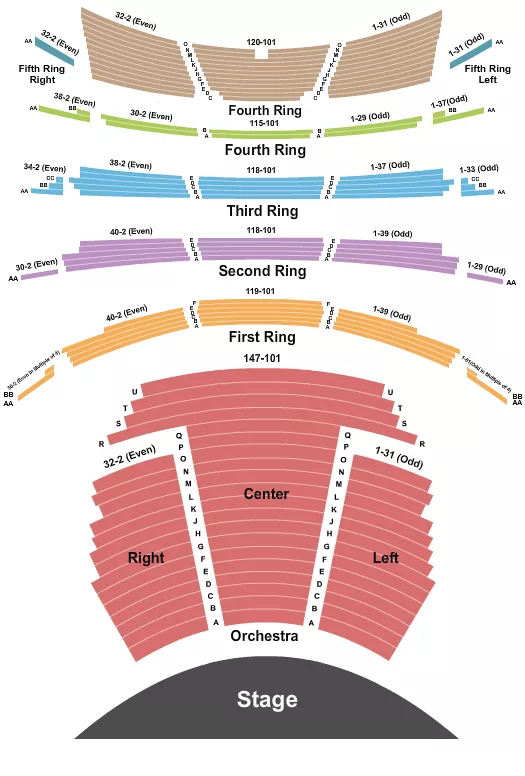New York City Ballet New York, NY - David H. Koch Theater
New York City Ballet Tour Dates
David H. Koch Theater - End Stage Seating Map

Learn More About Geroge Balanchine's The Nutcracker
The New York City Ballet's annual production of George Balanchine's "The Nutcracker" is a cherished holiday tradition that has captivated audiences for decades.
Here's a brief exploration of the history and significance of this iconic production:
This ballet company stands as one of the foremost companies globally, renowned for its artistic excellence and innovation. Balanchine's choreographic genius has left an indelible mark on the company's repertoire, making it a beacon of classical and contemporary ballet. This particular production, besides being the first one of its kind, premiering on February 2, 1954, is also widely regarded as the most faithful and authentic to Tchaikovsky’s original score and choreography.
The production features a total of 90 dancers, 62 musicians, 40 stagehands, and over 125 children divided into two alternating casts, all coming from the School of American Ballet, and it also includes a giant Christmas tree that grows to a full height of 41 feet and weighs 1 ton.
Thousands of people visit the David H. Koch Theater every year to experience this majestic rendition of The Nutcracker, which will take place between November 24 and December 31.
You can experience it, too, by getting your tickets through Event Tickets Center.
History and Creation
George Balanchine's adaptation of "The Nutcracker" premiered on February 2, 1954, at the City Center of Music and Drama in New York City. Balanchine, the co-founder of the New York City Ballet, choreographed the production, and the legendary composer Peter Ilyich Tchaikovsky's timeless score was brought to life.
Artistic Vision
Balanchine's vision for "The Nutcracker" was distinctive and transformative. He aimed to create a production that showcased the artistry and technical skill of the New York City Ballet's dancers. Balanchine's choreography is celebrated for its intricate footwork, expressive movements, and seamless integration with Tchaikovsky's music.
Influences and Style
Balanchine's "Nutcracker" reflects his neoclassical style, characterized by its emphasis on clarity, speed, and musicality. The choreography draws inspiration from traditional ballet while infusing a sense of modernity, making it both timeless and innovative.
Cultural Impact
Over the years, Balanchine's "Nutcracker" has become an integral part of the holiday season in New York City, attracting audiences of all ages. The production's enchanting storytelling, whimsical sets, and dazzling costumes contribute to its enduring popularity.
Legacy and Tradition
The New York City Ballet's annual staging of "The Nutcracker" has established itself as a beloved tradition, transcending generations. Families make it a point to attend each year, creating lasting memories and passing down the tradition to new audiences.
Unique Elements of New York City Ballet’s Nutcracker
Balanchine's choreography introduces unique elements to "The Nutcracker," such as the iconic "Dance of the Sugar Plum Fairy," "Waltz of the Flowers," and the "Russian Dance." These segments showcase the choreographer's ability to blend classical ballet with inventive and evocative movements.
Continued Success For Years to Come
Today, the New York City Ballet's production of "The Nutcracker" continues to be a hallmark of the holiday season. Its enduring success speaks to the timeless appeal of Balanchine's choreography and Tchaikovsky's enchanting score.
The New York City Ballet's annual presentation of George Balanchine's "The Nutcracker" stands as a testament to the transformative power of dance and music during the festive season. With its rich history, artistic vision, and cultural impact, this production remains an essential part of New York's holiday traditions.

